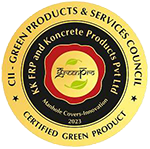Determining whether FRP (Fiber-Reinforced Polymer) or carbon fiber composites are better depends on the specific requirements and constraints of your application. Both materials have their advantages and disadvantages, and the best choice will vary depending on factors such as cost, strength, weight, and the environment in which they will be used. Here are some considerations to help you decide:
- Strength and Weight:
- If you require the highest strength-to-weight ratio, carbon fiber composites are the better choice. They are exceptionally strong and lightweight, making them ideal for high-performance applications where weight reduction is crucial.
- Cost:
- If cost is a significant factor, FRP composites may be the better option. They are often more cost-effective, particularly when using materials like fiberglass. Carbon fiber composites are known for their high cost, not just for the raw material but also for the specialized manufacturing processes involved.
- Applications:
- For applications where weight savings are essential, such as aerospace or high-end motorsports, carbon fiber composites are the preferred choice. FRP composites are more versatile and can be used in a wide range of industries and applications, from construction to marine to automotive.
- Corrosion Resistance:
- If your application is in a corrosive environment, such as in chemical processing or marine settings, FRP composites may offer better corrosion resistance, especially if the appropriate resin is chosen. Carbon fiber composites, on the other hand, are less susceptible to corrosion due to the carbon fiber itself but may still be affected by the choice of resin.
- Specific Performance Requirements:
- Consider the specific performance characteristics you need. For example, if you require electrical conductivity, carbon fiber composites are a better choice due to their conductive properties. If you need fire resistance, FRP composites may offer better options.
- Complexity and Production Scale:
- Consider the complexity and scale of your manufacturing process. Carbon fiber composites often require more specialized manufacturing techniques, which can be more complex and expensive. FRP composites may be easier to work with for smaller-scale or less specialized applications.
- Regulations and Standards:
- Ensure that the choice of material meets any industry-specific regulations and standards applicable to your application.
- Environmental Impact:
- Assess the environmental impact of your choice. Carbon fiber composites can be less environmentally friendly due to the energy-intensive production of carbon fibers. FRP composites may be a more sustainable choice in certain situations.
In summary, the “best” choice between FRP and carbon fiber composites depends on your specific needs. Consider factors such as strength, weight, cost, environmental conditions, and industry standards when making your decision. It’s often helpful to consult with experts or engineers with experience in composite materials to make an informed choice based on your unique requirements.





